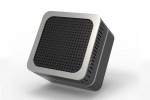
Introducing our new technology using UVC 270nm LED with nano particle composite photocatalysts T.T.A integrate in a compact and high efficiency sterilization and decomposition air clean module. We called it "UVC Air Clean Module" or "UVC Photocatalyst Air Clean Module". The module is designed as high efficiency, compact and can be spliced to many dimensions and efficiency conveniently with our own IP. Based on the "UVC Air Clean Module" you can develop your sterilization applications product or embedded in the related products easily.
About UVC Air Clean Module
UVC Air Clean Module DatasheetAs corona virus pandemic IAREX developed the high efficiency air sterilization, decomposition, and deodorizer module to provide a convenient way to the related applications and products development for disease disinfection from air, also can reduce allergens, anti-mold & mildew spray and deodorizer.




The UVC Photocatalyst Air Clean Module is designed can be embedded to air purifier inside or any kind application product easily. There are many models and can be spliced as different dimensions and efficiency as your requirements. Please contact us if there is any inquiry.

Recently, decomposition treatment by photocatalytic oxidation processes with metal oxide nanomaterials and nanocomposites such as titanium dioxide, silver nanoparticles, zirconium dioxide, etc. using ultraviolet (UV) and visible light or even solar energy has added massive research importance. This harmful substance removal technique using nanostructured photocatalysts is well known because of its effectiveness in disintegrating and decomposing the unsafe organic pollutants such as organic pesticides, organohalogens, PAHs (Polycyclic Aromatic Hydrocarbons), surfactants, microorganisms, and other coloring agents in addition to the prospect of utilizing the solar and UV spectrum.
The photocatalysts degrade the pollutants using light energy, which creates energetic electron in the metal oxide and thus generates hydroxyl radical, an oxidative mediator that can oxidize completely the organic pollutant in the environment. Altering the morphologies of metal oxide photocatalysts in nanoscale can further improve their photodegradation efficiency. Nanoscale features of the photocatalysts promote enhance light absorption and improved photon harvest property by refining the process of charge carrier generation and recombination at the semiconductor surfaces and in that way boost hydroxyl radicals.
 UVC LED Efficiency
UVC LED EfficiencyUV-C LEDs and advanced electronic controls allow for a much smaller footprint compared to traditional UV systems. This lends itself to a deeper embedding of UV-C LEDs into processes requiring disinfection.
 Solid state UV-C LEDs will always have a compact size advantage, given the nature of high-power density of LED technology. From a structural standpoint, UV-C LEDs are smaller and offer higher ultraviolet power densities than mercury-based UV lamps, meaning one can concentrate more light in a given area without the aid of external optical components and at a very small size.
Solid state UV-C LEDs will always have a compact size advantage, given the nature of high-power density of LED technology. From a structural standpoint, UV-C LEDs are smaller and offer higher ultraviolet power densities than mercury-based UV lamps, meaning one can concentrate more light in a given area without the aid of external optical components and at a very small size.
In addition to power density advantages, a move to digital disinfection drastically reduces the overall footprint of UV-C LED systems as lamp drivers and advanced controls are incorporated into a small electronic board along with the UV-C LED.
Benefits

- Less space required for unit and ancillaries
- More design freedom to implement UV disinfection
- Less labor required to install
- Fewer components for spares inventory

This UVC Photocatalyst Air Clean Module consists of UV-C LED light source, proactive nano material, photocatalytic nickle filter. The micro-fan the circulates the air that passes through the UV-C light, and T.T.A. photocatalytic filter.
The bacteria, viruses, molds etc. were killed, with allergens, odor, VOCs decomposed, reduced or neutralized inside the module and hence refreshed clean air is generated.
The UVC LEDs provide powerful UV-C light to kill the bacteria, germs and viruses also emitting the photocatalytic filter with photocatalytic composites nanoparticles T.T.A. in high energy level can decompose the harmful substance as high efficiency.


 What is T.T.A. - the new PCO material
What is T.T.A. - the new PCO material
Photocatalytic oxidation (PCO) is regarded as one of the most promising methods and has been the focus of many research works in the last two decades.
Titanium dioxide (TiO2) is by far the most investigated photocatalyst for photocatalytic degradation of gaseous VOCs (volatile organic compounds). T.T.A. is a new composites including the anatase structure TiO2 and silver nanoparticles with strong adhesion and long-lasting efficiency.
The UVC Photocatalyst Air Clean Module is designed can be embedded to air purifier inside or any kind application product easily. There are many models and can be spliced as different dimensions and efficiency as your requirements. Please contact us if there is any inquiry.



















21 Comment(s)
Dear Madame/Sir,\r\nwe are very interested in your UVC Modul. We have some questions about it:\r\n- are there efficiency tests regarding SARS \r\n- what are the prices for 100 MOQ or 500 MOQ\r\n- is it possible to get samples for testing\r\n\r\nBest regards,\r\nÖzkan Isik
Way cool! Some very valid points! I appreciate you penning this write-up plus the rest of the site is extremely good.
I always spent my half an hour to read this weblog’s content everyday along with a mug of coffee.
Ahaa, its good conversation regarding this post here at this blog, I have read all that, so now me also commenting here.
I am sure this article has touched all the internet visitors, its really really good paragraph on building up new webpage.
I always emailed this website post page to all my associates, as if like to read it afterward my friends will too.
I’ll immediately seize your rss feed as I can not to find your email subscription link or e-newsletter service. Do you have any? Kindly permit me know in order that I may subscribe. Thanks.
Ahaa, its fastidious discussion concerning this post here at this blog, I have read all that, so now me also commenting here.
Everyone loves what you guys tend to be up too. This type of clever work and exposure! Keep up the superb works guys I\'ve included you guys to my blogroll.
I just could not go away your site before suggesting that I extremely enjoyed the standard info a person supply for your guests? Is going to be again frequently to inspect new posts
Ahaa, its nice discussion about this paragraph at this place at this website, I have read all that, so now me also commenting here.
Ahaa, its good dialogue regarding this post here at this web site, I have read all that, so at this time me also commenting here.
I’ll immediately seize your rss as I can’t in finding your e-mail subscription hyperlink or e-newsletter service. Do you have any? Please let me understand so that I may just subscribe. Thanks.
Hi, I do think this is an excellent website. I stumbledupon it ;) I may return yet again since i have bookmarked it. Money and freedom is the best way to change, may you be rich and continue to help others.
I am sure this article has touched all the internet viewers, its really really fastidious paragraph on building up new weblog.
Início the formatting process.
I will right away seize your rss feed as I can not to find your email subscription link or e-newsletter service. Do you have any? Please permit me know in order that I could subscribe. Thanks.
It\'s very straightforward to find out any matter on net as compared to textbooks, as I found this piece of writing at this web page.
Its read speeds weren\'t bad, but anything that writes that slowly just isn\'t worth it.
I’ll immediately snatch your rss feed as I can not find your e-mail subscription hyperlink or e-newsletter service. Do you have any? Please let me recognize in order that I may subscribe. Thanks.
Hi to all, how is the whole thing, I think every one is getting more from this website, and your views are pleasant designed for new users.
Leave a Comment